-
 Bitcoin
Bitcoin $102,954.6793
-0.93% -
 Ethereum
Ethereum $2,504.7246
1.54% -
 XRP
XRP $2.6057
11.00% -
 Tether USDt
Tether USDt $1.0001
0.00% -
 BNB
BNB $667.2233
2.50% -
 Solana
Solana $175.5920
2.82% -
 USDC
USDC $0.9999
-0.01% -
 Dogecoin
Dogecoin $0.2350
3.90% -
 Cardano
Cardano $0.8285
4.64% -
 TRON
TRON $0.2744
5.02% -
 Sui
Sui $3.9909
1.29% -
 Chainlink
Chainlink $16.9538
1.63% -
 Avalanche
Avalanche $24.9856
2.39% -
 Stellar
Stellar $0.3235
6.22% -
 Shiba Inu
Shiba Inu $0.0...01609
1.85% -
 Hedera
Hedera $0.2241
10.59% -
 Toncoin
Toncoin $3.4455
1.62% -
 Bitcoin Cash
Bitcoin Cash $413.8972
1.70% -
 Hyperliquid
Hyperliquid $24.5150
1.12% -
 Polkadot
Polkadot $5.1435
1.88% -
 Pi
Pi $1.1438
7.14% -
 UNUS SED LEO
UNUS SED LEO $8.4955
2.05% -
 Litecoin
Litecoin $101.2848
1.94% -
 Monero
Monero $336.9017
0.19% -
 Pepe
Pepe $0.0...01387
4.12% -
 Bitget Token
Bitget Token $4.7592
-1.35% -
 Dai
Dai $0.9999
0.01% -
 Ethena USDe
Ethena USDe $1.0005
0.05% -
 Uniswap
Uniswap $6.9658
2.42% -
 Bittensor
Bittensor $455.8162
2.76%
MetaMask cross-chain transfer failed. Does the target chain support it?
MetaMask enables cross-chain transfers, but failures can occur due to network issues or insufficient fees; always verify target chain compatibility and settings.
May 12, 2025 at 12:49 pm
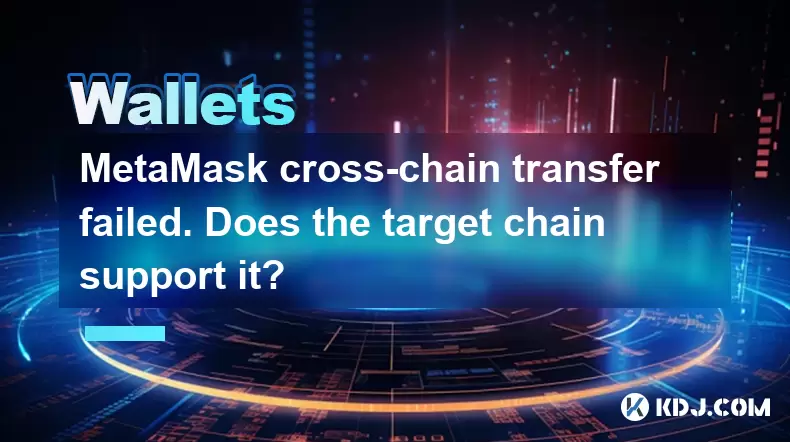
Understanding MetaMask and Cross-Chain Transfers
MetaMask is a popular digital wallet that allows users to interact with the Ethereum blockchain and other compatible networks. It provides a user-friendly interface to manage cryptocurrencies, interact with decentralized applications (dApps), and perform transactions. One of the advanced features that MetaMask supports is cross-chain transfers, which allow users to move assets between different blockchain networks. However, users often encounter issues when attempting these transfers, such as a cross-chain transfer failed error.
What Does "Cross-Chain Transfer Failed" Mean?
When you see the message "cross-chain transfer failed" in MetaMask, it indicates that the transaction you attempted to execute did not complete successfully. This can happen for various reasons, including network congestion, insufficient gas fees, or issues with the target chain's compatibility. One of the critical factors to check is whether the target chain supports the type of cross-chain transfer you are attempting.
Checking if the Target Chain Supports Cross-Chain Transfers
To determine if the target chain supports cross-chain transfers, you need to follow a few steps:
- Identify the target chain: First, you need to know the specific blockchain you are trying to transfer to. This could be Binance Smart Chain, Polygon, or any other network.
- Research the chain's documentation: Visit the official website or documentation of the target chain. Look for sections related to interoperability or cross-chain functionality.
- Check for bridge compatibility: Many chains use bridges to facilitate cross-chain transfers. Ensure that the bridge you are using is compatible with both the source and target chains.
- Verify supported tokens: Some chains may only support specific tokens for cross-chain transfers. Confirm that the token you are trying to transfer is supported on the target chain.
Common Reasons for Cross-Chain Transfer Failures
There are several reasons why a cross-chain transfer might fail, even if the target chain supports it:
- Insufficient gas fees: Each blockchain has its own fee structure. If you do not provide enough gas, the transaction may fail.
- Network congestion: High transaction volumes can lead to delays and failures in cross-chain transfers.
- Smart contract issues: If the smart contracts involved in the transfer are not functioning correctly, the transfer can fail.
- Incorrect settings: Misconfigured settings in MetaMask or the bridge can lead to failed transfers.
How to Troubleshoot a Failed Cross-Chain Transfer
If your cross-chain transfer fails, here are some steps to troubleshoot the issue:
- Check transaction status: Use a blockchain explorer to see if the transaction was processed and where it failed.
- Verify gas settings: Ensure you have set the correct gas limit and gas price for the transaction.
- Retry the transaction: Sometimes, retrying the transaction with adjusted settings can resolve the issue.
- Contact support: If the issue persists, reach out to the support teams of both the source and target chains for assistance.
Ensuring Successful Cross-Chain Transfers
To increase the chances of a successful cross-chain transfer, consider the following tips:
- Use reliable bridges: Choose well-established and reputable bridges for your transfers.
- Monitor network conditions: Keep an eye on the current state of both the source and target networks to avoid peak congestion times.
- Set appropriate fees: Ensure you are setting the right gas fees to cover the costs of the transaction.
- Double-check token compatibility: Always confirm that the token you are transferring is supported on the target chain.
FAQs
Q: Can I recover my funds if a cross-chain transfer fails?
A: In many cases, if a cross-chain transfer fails, the funds will be returned to your wallet. However, the exact outcome depends on the specific circumstances of the failure. It's essential to check the transaction status and contact support if necessary.
Q: Are there any risks associated with cross-chain transfers?
A: Yes, cross-chain transfers come with risks such as smart contract vulnerabilities, bridge hacks, and potential loss of funds if the transfer fails. Always use reputable services and understand the risks involved.
Q: How long does a cross-chain transfer typically take?
A: The duration of a cross-chain transfer can vary widely depending on the networks involved and their current congestion levels. Transfers can take anywhere from a few minutes to several hours.
Q: Can I use MetaMask for all types of cross-chain transfers?
A: MetaMask supports many cross-chain transfers, but not all. It depends on the specific networks and bridges you are using. Always check the compatibility before attempting a transfer.
Disclaimer:info@kdj.com
The information provided is not trading advice. kdj.com does not assume any responsibility for any investments made based on the information provided in this article. Cryptocurrencies are highly volatile and it is highly recommended that you invest with caution after thorough research!
If you believe that the content used on this website infringes your copyright, please contact us immediately (info@kdj.com) and we will delete it promptly.
- XRP Price Prediction 2025, 2030, and 2040: Will It Lead the Next Bull Run?
- 2025-05-13 01:25:12
- Explore Why Whales Are Loading Up on These 4 Top Bullish Cryptos to Buy Now!
- 2025-05-13 01:25:12
- Bitcoin (BTC) Knots, a Conservative Implementation of Bitcoin (BTC) Blockchain Node Software
- 2025-05-13 01:20:12
- Uniswap Hits $3T in Aggregate All-Time Volume, Becomes the World's First Decentralized Exchange to Achieve This Milestone
- 2025-05-13 01:20:12
- Healthcare company KindlyMD merges with Trump’s crypto advisor David Bailey’s bitcoin-native company Nakamoto
- 2025-05-13 01:15:12
- TON and XRP Price Analysis: Targeting $4 and $6.50
- 2025-05-13 01:15:12
Related knowledge
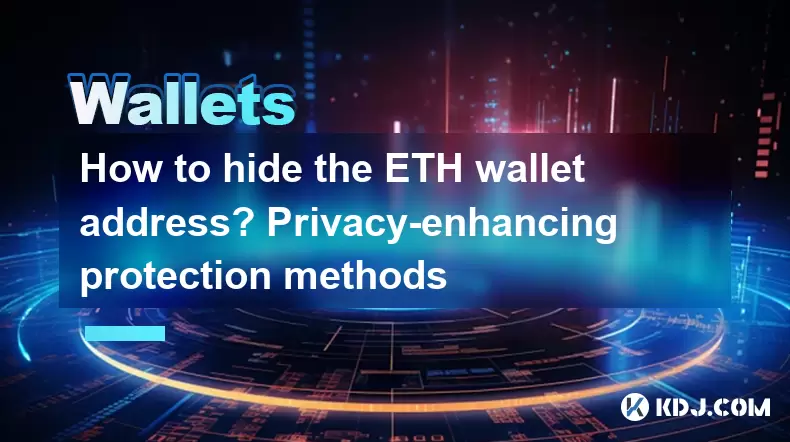
How to hide the ETH wallet address? Privacy-enhancing protection methods
May 13,2025 at 12:28am
Protecting your Ethereum (ETH) wallet address is crucial for maintaining privacy and security within the cryptocurrency space. With the growing concerns over privacy breaches and hacking attempts, it is essential to understand various methods that can help you hide your ETH wallet address effectively. This article will delve into several privacy-enhanci...
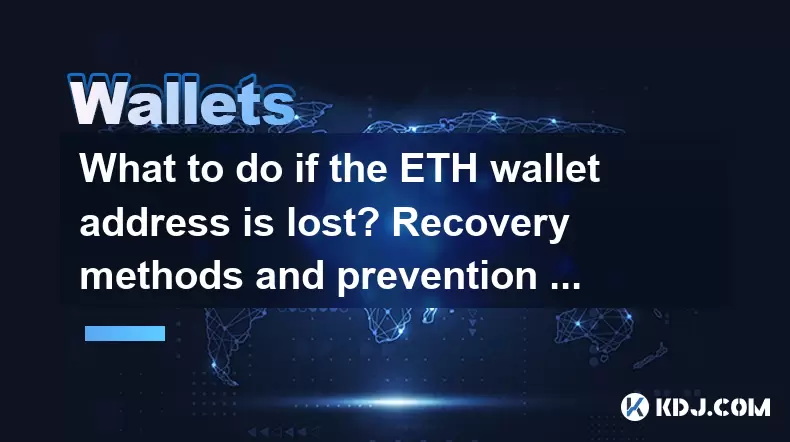
What to do if the ETH wallet address is lost? Recovery methods and prevention suggestions
May 13,2025 at 12:42am
Losing an Ethereum (ETH) wallet address can be a distressing experience, especially if it contains significant funds. However, there are several recovery methods and preventive measures you can take to mitigate the risk and potentially recover your lost wallet. This article will guide you through the steps to recover a lost ETH wallet address and provid...
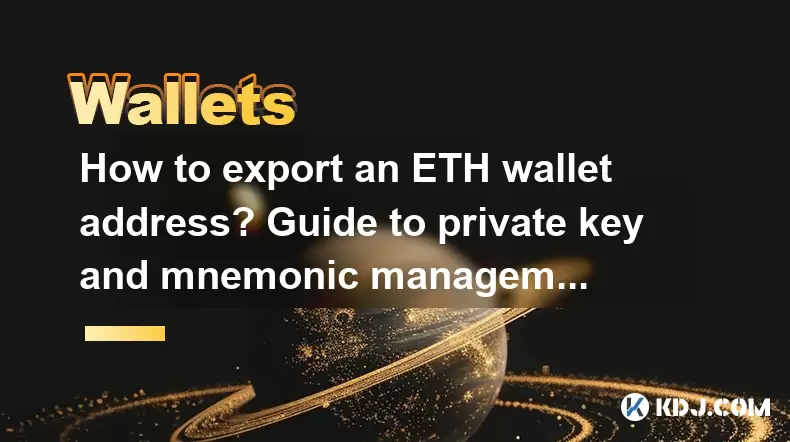
How to export an ETH wallet address? Guide to private key and mnemonic management
May 12,2025 at 09:28pm
Managing your Ethereum (ETH) wallet effectively involves understanding how to export your wallet address, and how to securely manage your private keys and mnemonic phrases. This guide will walk you through the steps to export your ETH wallet address and provide detailed instructions on managing your private keys and mnemonic phrases. Exporting Your ETH ...
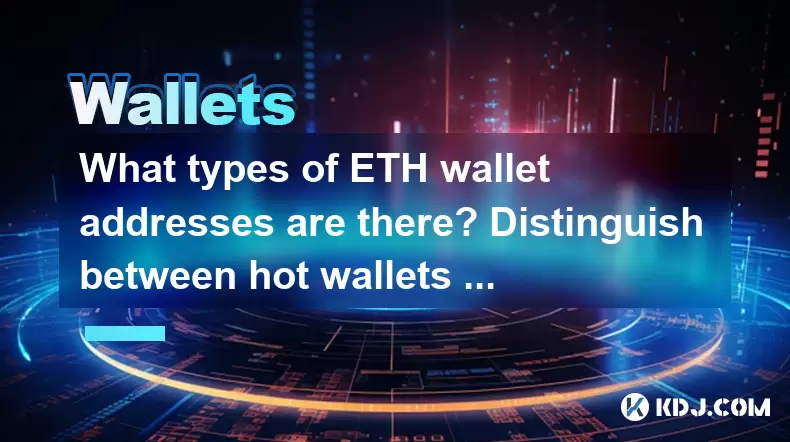
What types of ETH wallet addresses are there? Distinguish between hot wallets and cold wallets
May 13,2025 at 01:14am
Ethereum (ETH) wallets are essential tools for managing, storing, and transacting with ETH and other ERC-20 tokens. These wallets come in various forms, each with unique features and security levels. In the cryptocurrency world, wallets are broadly categorized into hot wallets and cold wallets. This article will explore the different types of ETH wallet...
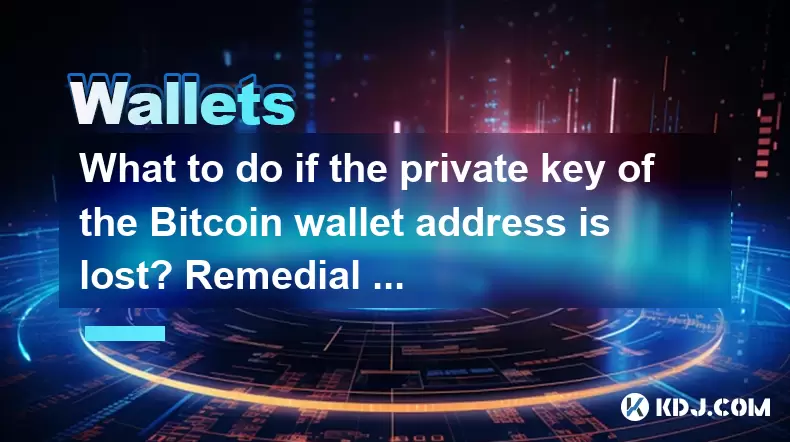
What to do if the private key of the Bitcoin wallet address is lost? Remedial measures analysis
May 12,2025 at 07:14pm
Losing the private key of a Bitcoin wallet address can be a distressing situation for any cryptocurrency holder. The private key is essential for accessing and managing the funds stored in the Bitcoin address. Without it, the owner is unable to spend or transfer the bitcoins associated with that address. In this article, we will explore various remedial...
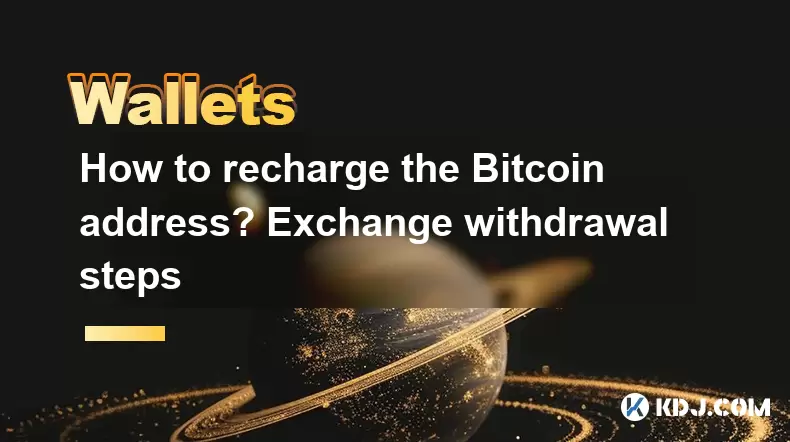
How to recharge the Bitcoin address? Exchange withdrawal steps
May 12,2025 at 11:36pm
Introduction to Recharging a Bitcoin AddressRecharging a Bitcoin address involves transferring Bitcoin from an exchange or another wallet to your designated Bitcoin address. This process is often referred to as a withdrawal from the exchange and a deposit to your wallet. Understanding how to recharge your Bitcoin address safely and efficiently is crucia...

How to hide the ETH wallet address? Privacy-enhancing protection methods
May 13,2025 at 12:28am
Protecting your Ethereum (ETH) wallet address is crucial for maintaining privacy and security within the cryptocurrency space. With the growing concerns over privacy breaches and hacking attempts, it is essential to understand various methods that can help you hide your ETH wallet address effectively. This article will delve into several privacy-enhanci...

What to do if the ETH wallet address is lost? Recovery methods and prevention suggestions
May 13,2025 at 12:42am
Losing an Ethereum (ETH) wallet address can be a distressing experience, especially if it contains significant funds. However, there are several recovery methods and preventive measures you can take to mitigate the risk and potentially recover your lost wallet. This article will guide you through the steps to recover a lost ETH wallet address and provid...

How to export an ETH wallet address? Guide to private key and mnemonic management
May 12,2025 at 09:28pm
Managing your Ethereum (ETH) wallet effectively involves understanding how to export your wallet address, and how to securely manage your private keys and mnemonic phrases. This guide will walk you through the steps to export your ETH wallet address and provide detailed instructions on managing your private keys and mnemonic phrases. Exporting Your ETH ...

What types of ETH wallet addresses are there? Distinguish between hot wallets and cold wallets
May 13,2025 at 01:14am
Ethereum (ETH) wallets are essential tools for managing, storing, and transacting with ETH and other ERC-20 tokens. These wallets come in various forms, each with unique features and security levels. In the cryptocurrency world, wallets are broadly categorized into hot wallets and cold wallets. This article will explore the different types of ETH wallet...

What to do if the private key of the Bitcoin wallet address is lost? Remedial measures analysis
May 12,2025 at 07:14pm
Losing the private key of a Bitcoin wallet address can be a distressing situation for any cryptocurrency holder. The private key is essential for accessing and managing the funds stored in the Bitcoin address. Without it, the owner is unable to spend or transfer the bitcoins associated with that address. In this article, we will explore various remedial...

How to recharge the Bitcoin address? Exchange withdrawal steps
May 12,2025 at 11:36pm
Introduction to Recharging a Bitcoin AddressRecharging a Bitcoin address involves transferring Bitcoin from an exchange or another wallet to your designated Bitcoin address. This process is often referred to as a withdrawal from the exchange and a deposit to your wallet. Understanding how to recharge your Bitcoin address safely and efficiently is crucia...
See all articles






















































































